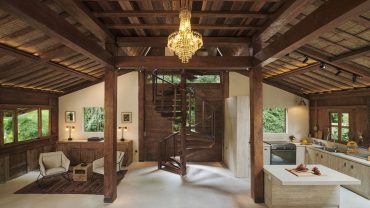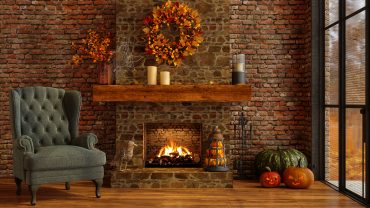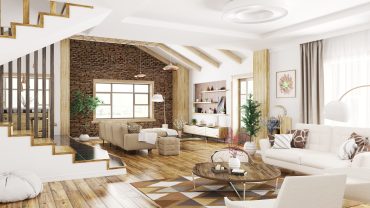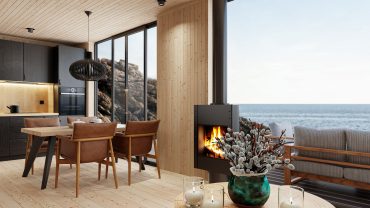Queen Anne interior design is a term that evokes images of elegance, refinement, and a distinct blend of historical influences. Rooted in the early 18th century, this style has its origins in the reign of Queen Anne of Great Britain – who ruled from 1702 to 1714 – and was popularised during the late Victorian period as a revival style.
While often associated with architecture, Queen Anne’s influence on interior design and furniture has left a lasting legacy that continues to inspire to this day. So, what exactly can one expect to find in Queen Anne style house interiors? Read on for all the details.
The Origins of Queen Anne Design

Classic Queen Anne chair, comfort & convenience (Credit: Thomas Bullock via Getty Images)
The origins of Queen Anne interior design can be traced back to the late 17th and early 18th centuries, a time when British society was undergoing significant change. As the reign of King William III transitioned into Queen Anne’s rule, a new style began to emerge. This period marked a shift away from the grandeur and formality of the Baroque era towards a more understated elegance which emphasised comfort and livability. The Queen Anne decorating style was characterised by its use of symmetry, classical motifs, and a warm, inviting colour palette that reflected the softer, more domestic nature of the time.
During Queen Anne’s reign, interior spaces became more intimate and tailored to the needs of the inhabitants. This shift was also reflected in the furniture of the period, which became lighter and more refined. The influence of social customs, such as the growing popularity of tea drinking, played a significant role in shaping Queen Anne decor. Furniture pieces were designed to be functional yet graceful, with an emphasis on comfort and convenience.
Defining Characteristics of the Queen Anne Decorating Style

A Queen Anne style living room (Credit: YinYang via Getty Images)
Several key elements define Queen Anne design, each contributing to its unique aesthetic:
Restrained & Refined
The British Queen Anne style interiors are celebrated for their pared down approach, particularly when compared to the more opulent continental designs of the same period. This represented a move towards more subtle and simple elegance.
Classical Touches
Classical components such as pediments and symmetry play a crucial role in the overall design, providing a sense of order and harmony. Decorative elements such as mouldings, carvings, and ornate plasterwork are often used to add texture and depth to the walls, woods, and stonework.
Fluid Form Meets Function
One of the most distinctive features of Queen Anne interior design is the use of gentle curves. This is epitomised in the iconic shape of the cabriole leg, a feature found on Queen Anne bookcases, tables, and, of course, chairs. An S-curve design with a rounded knee at the top and a tapering foot at the bottom, it mimics the form of an animal’s leg, often ending in a pad, ball-and-claw, or slipper foot. The roundedness continues on the backs of these chairs, designed to fit the hollow of the spine, offering not only beauty but also ergonomics. This emphasis on comfort was a significant shift from the more rigid designs of earlier periods.
Muted Materials & Motifs
In line with its emphasis on subtlety, the motifs of the Queen Anne decorating style tend to feature as understated carvings of shell, scallop, and scroll shapes in wood or stonework. When it came to materials, this period saw a shift away from the heavy, dark furniture of the past towards lighter, more delicate pieces. This earned Queen Anne decor the moniker of being the “age of walnut,” a reference to the move from oak to walnut wood.
The British Revival of Queen Anne Decor

Queen Anne Revival style architecture (Credit: Reimar Gaertner/UIG via Getty Images)
The original Queen Anne style was eventually supplanted by other design trends. However, it experienced a significant revival in the late 19th and early 20th centuries. The Queen Anne Revival saw a renewed interest in the elegance and refinement of the early 18th century, with architects and designers drawing inspiration from the original style while incorporating elements from other historical periods.
The revived Queen Anne decorating style was characterised by its eclectic mix of influences, such as Tudor, Gothic, and other Renaissance styles. In Britain, architects like George Devey and Norman Shaw were instrumental in popularising this movement, which became known for its fine brickwork, terracotta panels, and asymmetrical facades. While the revival primarily focused on architecture, it also had a significant impact on interior design, leading to a resurgence of interest in Queen Anne style interiors and furniture.
The New World Queen Anne Revival

Intricate plasterwork in the classic Queen Anne style (Credit: Vostok via Getty Images)
In some corners of the world, Queen Anne interior design has a very different meaning. This dates back to the period from the 1880s to the early 1900s, when the monarch’s name was attached to architectural movements internationally, especially in the US and Australia. However, the so-called Queen Anne Revivals in these regions bore little similarity to the original style, and instead focused on a more eclectic and decorative approach.
Queen Anne Design in Practice

Intricate woodwork and detailed mouldings (Credit: Craig Lovell via Getty Images)
Incorporating Queen Anne design elements into a home involves careful selection of furniture, fabrics, and decorative details. Furniture with elegant curves and carvings is central to achieving this look, as are rich fabrics like velvet and brocade. Decorative patterns, whether in wallpapers or upholstery, should be chosen for their ability to add depth and interest to the space. Additionally, enhancing spaces with intricate woodwork and detailed mouldings, can bring a touch of Queen Anne charm to any interior. The goal is to create a space that is both sophisticated and inviting, capturing the essence of Queen Anne decor.
Summarising the Queen Anne Decorating Style

A stunning Victorian living room (Credit: Johnrob via Getty Images)
The Queen Anne interior design style is a testament to the enduring appeal of elegance, comfort, and craftsmanship. From its origins in the early 18th century to its various revivals and modern interpretations, the Queen Anne decorating style continues to inspire designers and homeowners alike.












